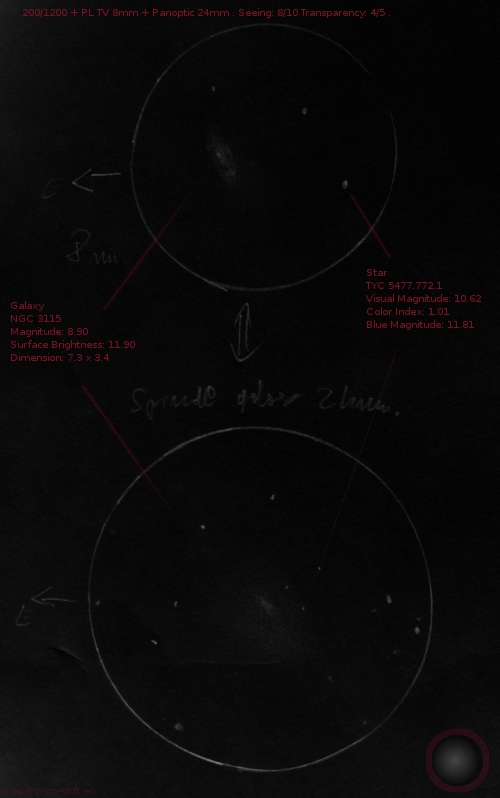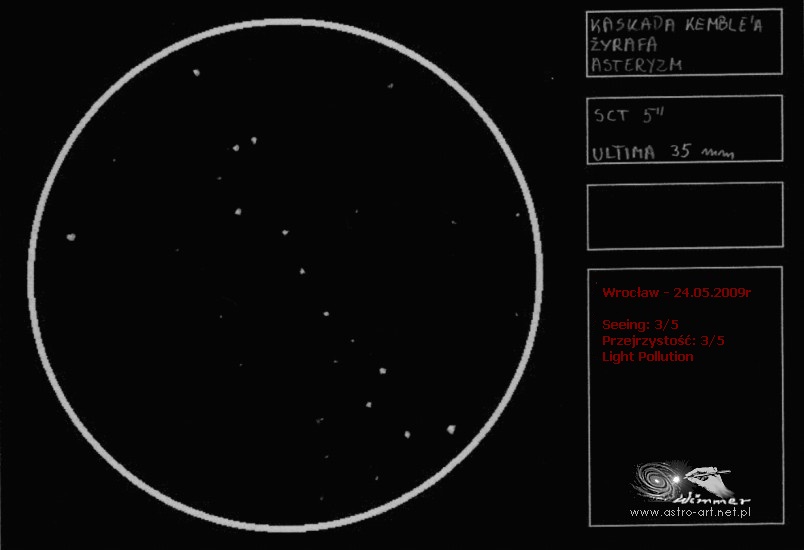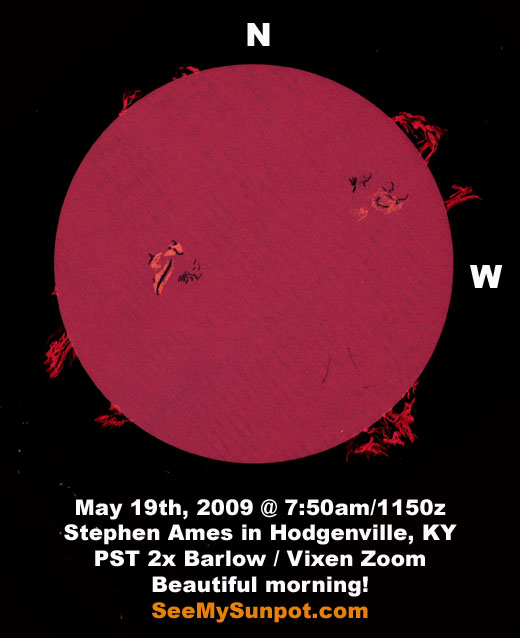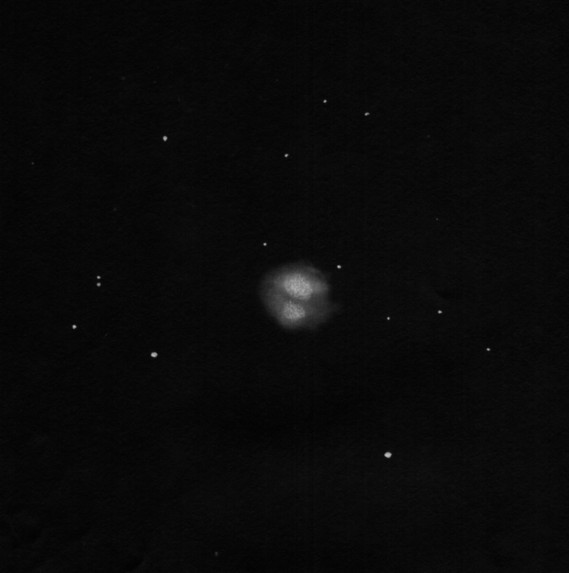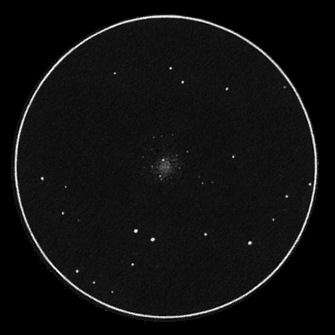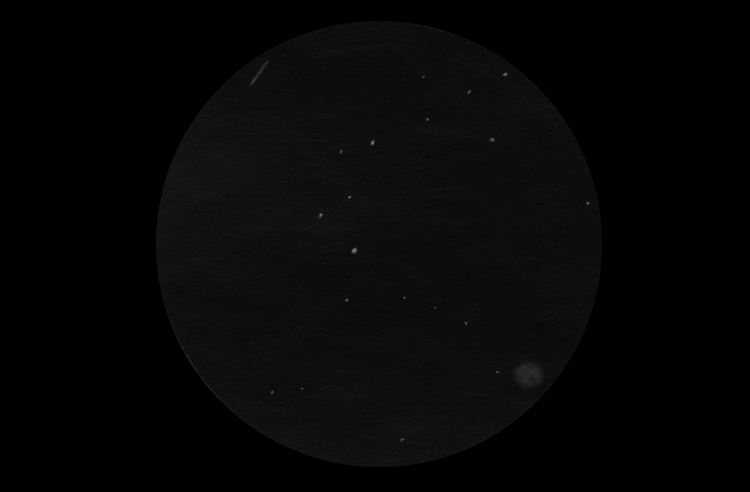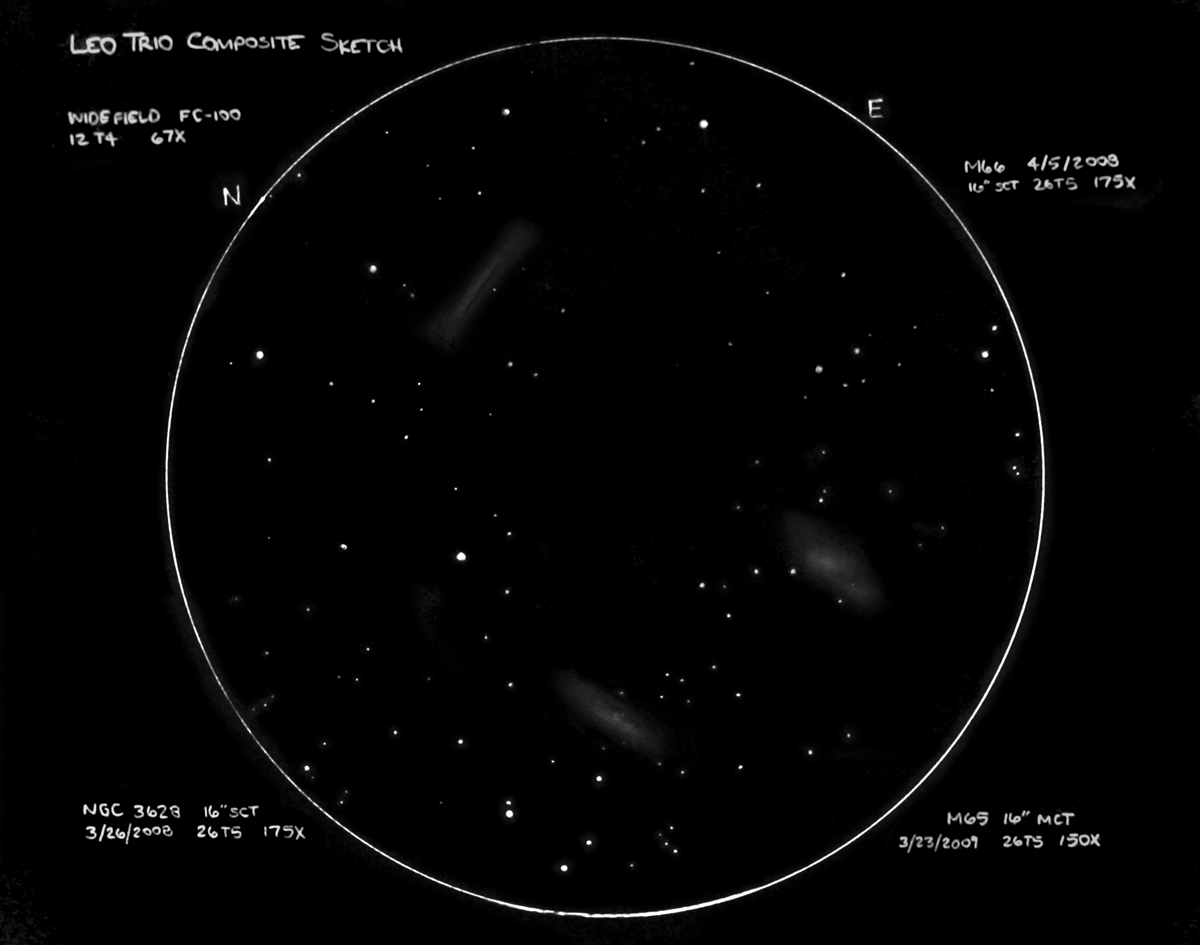
The Leo Triplet, M65, M66 and NGC 3628
Sketches and Details by Jeff Young
This is a large-format sketch of the Leo Triplet. The field stars and galaxy positions were drawn from observations through a Takahashi FC-100 at 67X, while the individual galaxy details are from 3 separate sketches through 16” cats (M66 and NGC3628 through my old Meade SCT at 175X, and M65 through my newer APM Mak at 150X).
I scanned the original sketches and increased the contrast, and then printed them to the same scale. The printouts were taped together with the final 12” x 16” sketch paper, and the field stars and galaxy positions were traced with the help of backlighting from a window.
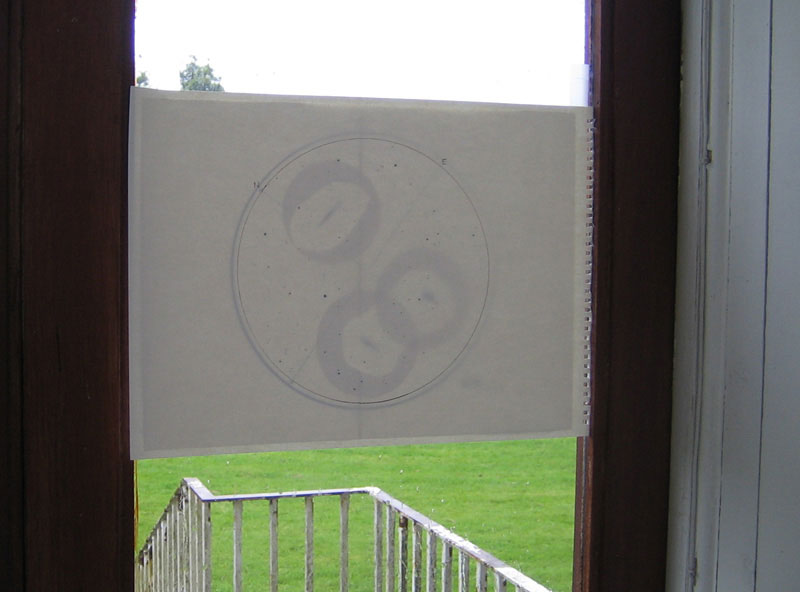
I then copied the galaxy details by hand from the original sketches.
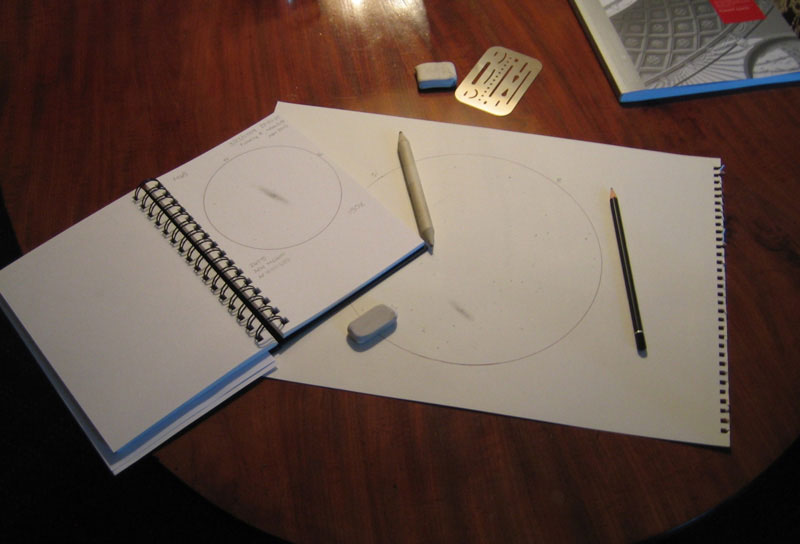
There’s a bit more noise in the final result than usual because the larger format wouldn’t fit my scanner and I had to take a picture of it with my digital camera.
The Leo Triplet (M65, M66 and NGC3628)
Daler Rowney HB pencil on Daler Rowney A3 150 gsm cartridge paper
Sketched from County Louth, Ireland
Cheers,
— Jeff.
